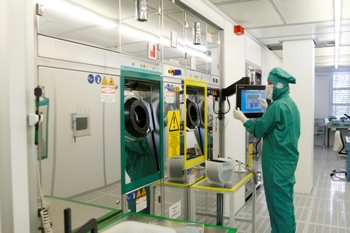Researchers have now designed a system that can produce unique micro-electromechanical systems using the correct etching method. Researchers at the Systems IMS in Duisburg, Germany and Fraunhofer Institute for Microelectronic Circuits are offering a solution for commercial production of micro-systems. A new facility to produce micro-system technology (MST) will be inaugurated on June 22.
 MSTs, tiny sensors integrated into semiconductor chips, are produced in the MST laboratory and clean room
MSTs, tiny sensors integrated into semiconductor chips, are produced in the MST laboratory and clean room
MST incorporates sensors, tiny valves, or other mechanical parts into semiconductor chips. For example, MST functions as motion sensors in airbags and is only as thick as a human hair.
It is necessary to stack three layers atop each other to apply MST to a semiconductor. The silicon wafer comprises the bottom layer and acts as the substrate. The sacrificial layer at the middle functions as a spacer. The uppermost layer forms the function layer. When the sacrificial layer is etched away, only the required sensor structure remains.
The process of etching must be done uniformly in all directions. Researchers named this process “isotropic etching.” The etching substance etches vertically to the substrate and also under the function layer. As a result, the thin function layer is only 100nm and remains linked to the substrate at only specific suspension points. The new manufacturing plant could transform MST production since the process ensures high-accuracy on an industrial scale. Several MST structures such as acceleration sensors, thermal detectors, and pressure sensors or micro machines can be produced using the same technology.